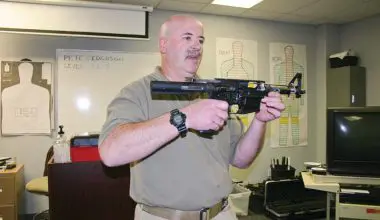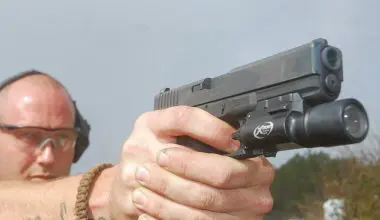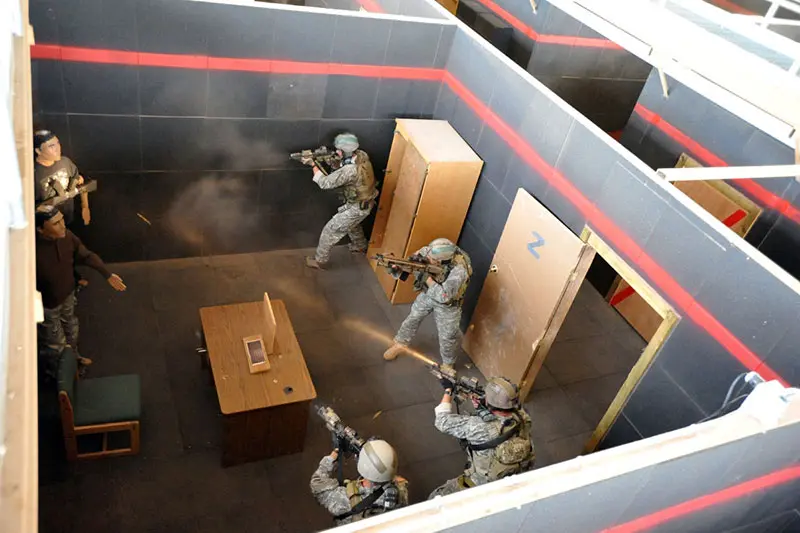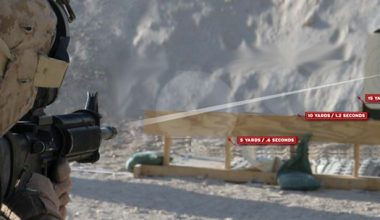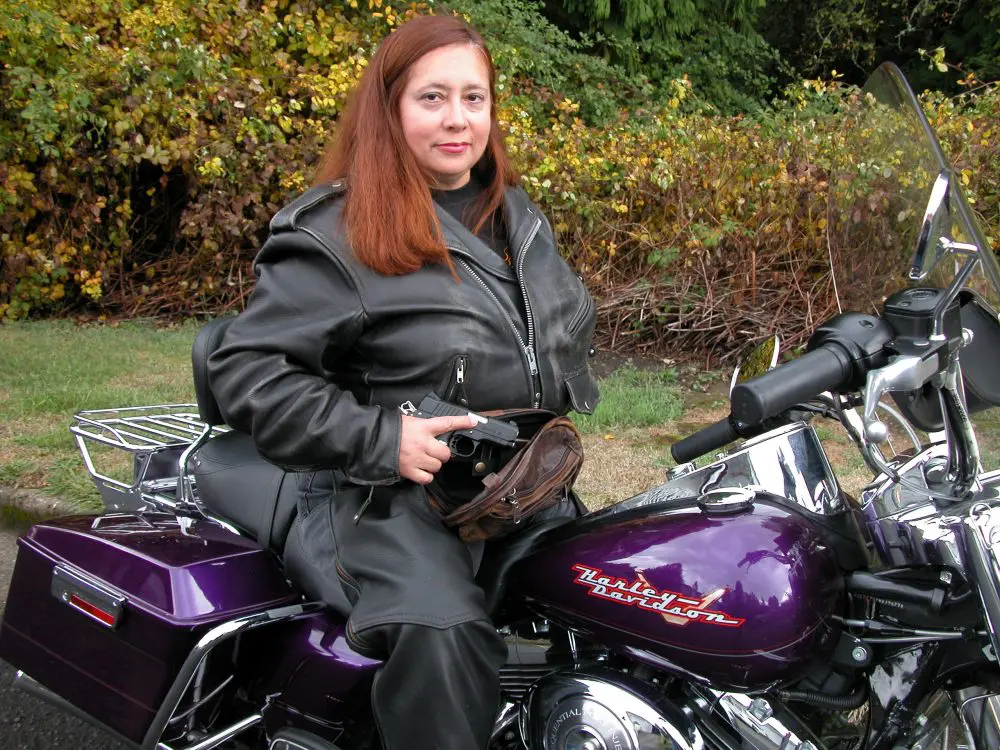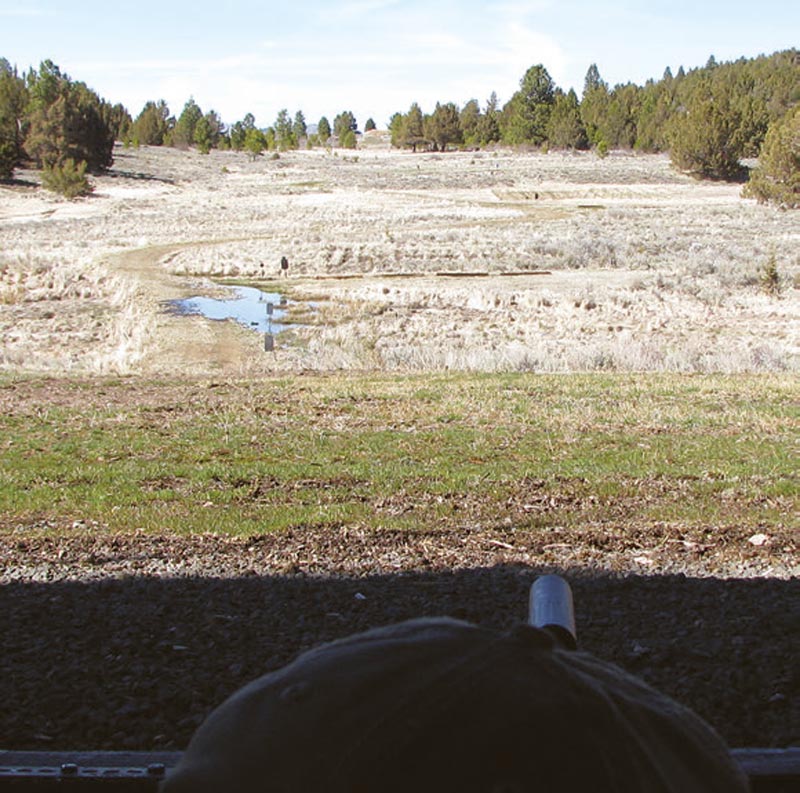
Precision rifle is my weakest shooting skill, even though I served as a SWAT sniper for a few years. I’m decent with a pistol, shotgun, submachine gun, and carbine, but precision is all mathematics and patience—and I don’t have any talent in either area.
I have a couple of good rifles. One is my old SWAT rifle, which I bought myself. It’s a Remington 700 Varmint, off the rack. I later added a good synthetic stock, Leupold 3.5X10 scope, Birdsong Black-T finish, and Advanced Armament Cyclone can. If I do my part, it’ll shoot half a minute all day.
The other is a LaRue Tactical OBR. I ordered it with a 20-inch barrel and fixed stock, since I thought it would be more accurate with the longer barrel. It is. It has the Leupold 4.5X14 Mark IV LR/T illuminated reticle scope and weighs about 12.5 pounds. I hadn’t shot it much and wanted to learn more about using mils, so I took it to Thunder Ranch for a two-day tutorial.
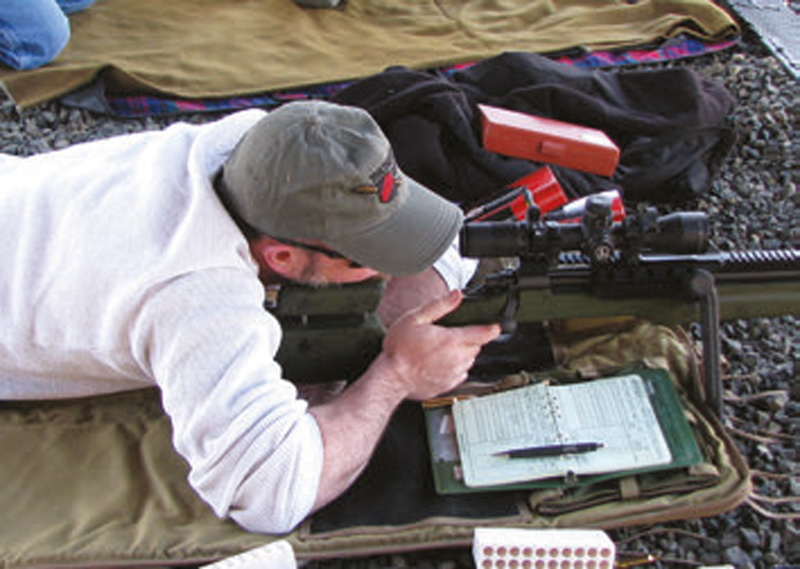
Table of Contents
THUNDER RANCH
For those of you recently arrived from Mars, Thunder Ranch (TR) is located in south-central Oregon. TR’s 877 acres contain a square range, two-story livefire shoothouse called The Terminator, and upper range that shoots to 700 yards. TR does a high-angle class, where you shoot to 1,200 yards from a high ridge above the main ranch house, and also offers carbine and pistol classes and custom tutorials.
Clint Smith runs the place (actually his wife Heidi runs it). If you’re over 30 and don’t know Clint Smith, you’ve led a sheltered life. A Vietnam combat Marine, former police sniper, and longtime Gunsite instructor, Clint is one of the best firearms instructors in the world. He is one of the very few who can do it all—auto pistol, revolver, carbine, submachine gun, shotgun, and precision rifle. He’s a true master of each.
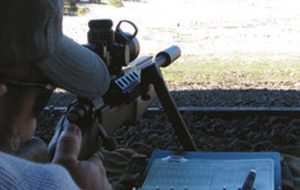
All you young coppers who run around with ARs around your neck owe something to Clint. He started promoting carbines for patrol officers 30 years ago with his Urban Rifle doctrine. At the time, auto pistols were just coming into police service, and the shotgun ruled the long gun world. He thought that policemen could fight better with a rifle. He was a voice in the wilderness in those days, but the world has caught up with him.
THE SHOOTISTS
We had a great class. Tim O’Connor from Leupold is one of the best shots I’ve ever seen. I first trained with Tim at Gunsite and have worked with him several times since. Tim has no military or police experience, but he’s a wizard with optics.
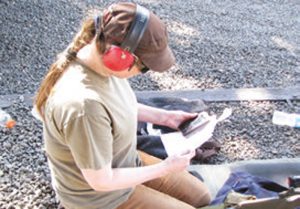
LTC Freddie Blish, USMC (Ret.) is a Gunsite instructor, has worked for Aimpoint and LaRue Tactical, and now works for Robar.
Mike Hatoor is a Bend, Oregon PD senior firearms instructor. Tom Lewis owns a Bend gun store. Tom confessed that he was a little nervous because he doesn’t have a military or law enforcement background. That disappeared as soon as he got behind the gun.
Heidi Smith filled out the line and teamed up with me as a partner/coach. If you think a gun chick can’t hold her own in a crowd like that, bring your money and prove it. She was fighting food poisoning, so she’d shoot a sub- MOA string, go throw up, then return and shoot another.
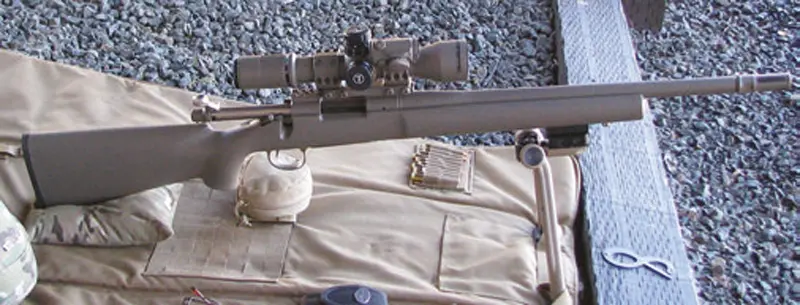
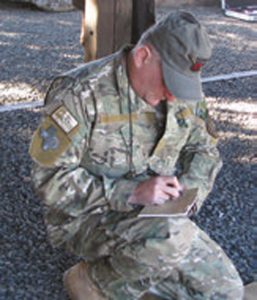
THE RIFLES
Remington 700 actions ruled the day. Heidi Smith shot a Georgia Precision rifle that was the prototype for the Thunder Ranch rifle now made by the company. Her glass was a Schmidt & Bender variable.
Mike Hatoor shot a Remington LTR with Leupold 3.5X10 Mark 4. He recently got it back from Georgia Precision and was very happy with the Badger Ordnance oversized bolt and ten-round magazine. He’d explained when he sent it in that he needed it by the end of the month for a TR class. GP rushed it through, and it ran and shot very well.
LTC Blish shot a Robar SR-60 bolt gun with Leupold Mark 4 scope with Horus reticle, while Tim O’Connor used the same glass on a 700 AAC.
If you think you need a high-dollar gun, you should have watched Tom shoot an off-the-rack Remington SPS. Clint gleefully said, several times, “It ain’t the gun, it’s the shooter.” Tom proved that to be true.
I was the oddball with an autoloader, but I wasn’t hampered by it. In fact, the OBR turned in the tightest group on Training Day One, with three rounds in a .35 MOA group. Three of us shot Black Hills 168-grain Match, while the others shot Federal Match in 168- or 175-grain loads.
TRAINING DAY ONE
TD1 started in the classroom with the usual waivers, orientation, and lecture. Clint knows all of us, so there was no ice to break. Clint is known for his “Clintisms.” His most famous, uttered on the 60 Minutes news program, is “Some people just need to be shot.” He doesn’t pull any punches, really knows his stuff, and keeps the class moving. After only an hour, we were on the rifle deck with paper and steel targets from 100 to 700 yards.
I set what I thought was a reasonable personal goal: hit a man-sized target on demand out to 500 yards. We spent the first hour zeroing, working on basics, adjusting, and zeroing out the turrets— all the normal stuff.
Clint is a believer in dialing DOPE (Data On Prior Engagements), especially for police officers, because it’s documentable and precise. He fully understands and uses mils, but urged us to dial dope. To my feeble mind, mils are a way to document and repeat hold off and hold over/under.
As TD1 progressed, we constantly dialed dope to ranges out to 700 yards, went back to zero and did it again. Clint has many odd-sized steel targets placed at all ranges, and he’d call out a target, give us the range, and expect us to hit it. The pace was easy enough that we didn’t have to rush shots. As Clint puts it, “Hits finish fights.”
Shooting at distance is pretty straightforward out to a certain range. I found the 600-yard target pretty doable but the 700 yard a deal breaker. We didn’t shoot beyond 700 very much. I’m told it’s an art form. At TR, the 700-yard target sits at a confluence of wind currents that rise from the valley below and change constantly.
The day ended with a confirmation of 100-yard zero, making notes in our data books, policing brass, and stretching our aching necks.
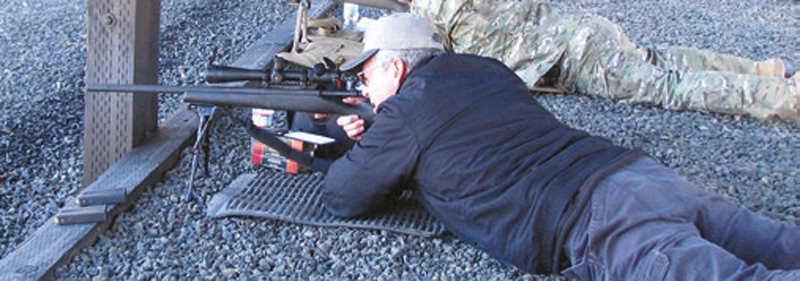
TRAINING DAY TWO
TD2 found us on the rifle deck at 0830, ready to shoot. We confirmed zero. I was shooting about one minute high. It was 20 degrees colder and more humid than TD1, but the altitude was still 5,700 feet.
We discussed several possible reasons for my shooting high and finally figured it was Minute of Jeff. Heidi kept a close eye on me and found I was digging my toes into the dirt before I shot. It’s always the small stuff….
Clint started with a discussion of mils and gave us the school chart on mils to 700 yards. He then had us dial in 300-yard dope and shoot with mils to 700 and back to 200 on steel. We then switched to moving lollipops, smaller targets at odd angles, shooting progressively smaller colored steel targets … the man’s imagination is endless and the drills kept coming.
The next test was shooting five shots at steel at 200 through 700 yards, 30 rounds total. We worked in spotter/ shooter teams, with Heidi calling “Favor left, hold right,” etc. The wind was squirrelly enough that as soon as the spotter figured it, you had to shoot, because the wind would literally change between shots. With Heidi calling, I went five for five on each target out to 600 yards. But 700 kicked my butt: I hit one out of five.
For the last drill, Clint called us over to a spotting scope and showed us a sixinch square orange target at 900 yards. He helped us figure dope, dial it in, and then had us shoot one at a time.
I never hit it, but if it had been a man, I’d have ruined his day. Tom rolled it once, Tim and Heidi hit it twice, and Freddie scared the hell out of it.
READY FOR …
I don’t know what’s coming down the road. I do know that we all need to be equipped and ready to protect ourselves and maybe our Republic. I feel confident in my skills with handgun, carbine and shotgun, and after two days at Thunder Ranch, I can own the midrange ground out to 500 yards with a precision rifle.
I did find that cheek weld on the stock with the LaRue mount was tough, so I added a Magpul PRS adjustable stock as soon as I got home. It works a lot better.
There are lots of people in the firearms training business. It seems that every guy who served in Iraq or Afghanistan was SPECOPS, and he pushes up a berm and opens a school. Some are very good, others are not good, and some are charlatans. Just because a person has been in combat does not automatically mean he will make a good trainer. It’s a real skill to be able to convey concepts to students in a way that they can easily learn and apply them.
If you want to be good, train with one of the best. Go to Thunder Ranch and train with Clint Smith. His reputation is impeccable and I’m here to tell you first-hand that Clint’s not resting on his laurels but rather using his skills and creativity to get the best out of his students.
